Oracle Database Creation
Migration-center uses an Oracle database to store information about documents, migration sets, users, jobs, settings and others.
This guide describes the process of creating an Oracle 19c (v19.3.0.0.0) database instance on Microsoft Windows. Even though the description is very detailed, the installing administrator is expected to have a good degree of experience in configuring databases.
Database configuration assistant
Open the Database Configuration Assistant from the Oracle program group in the Start menu. The assistant will guide you through the creation steps.
Step 1: Database Operation
Select the Create Database option and click Next.
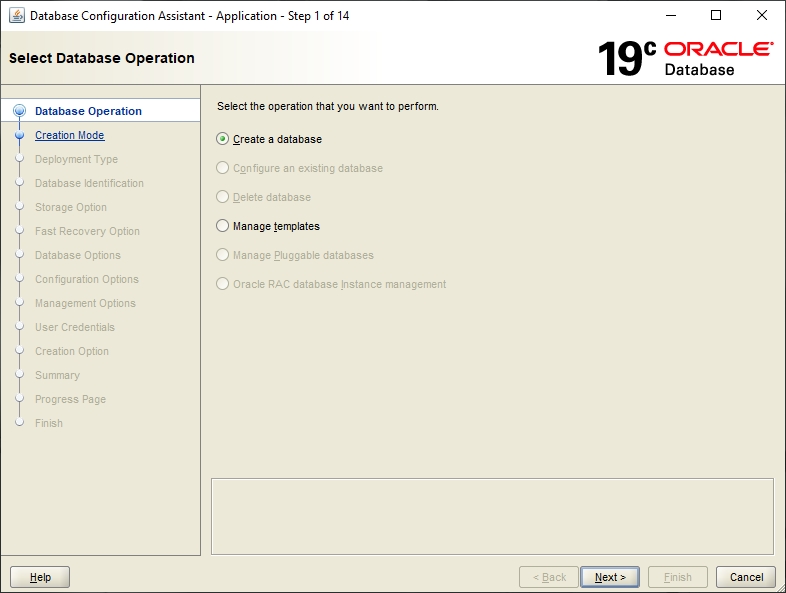
Step 2: Creation Mode
It is recommended to go with the Advanced configuration.
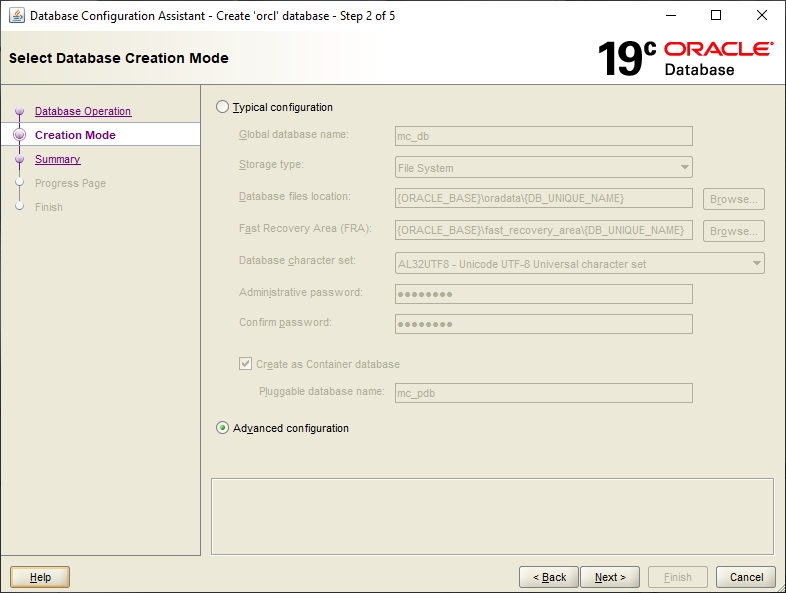
Step 3: Deployment Type
For the purpose of most installations Oracle Singla Instance Database and General Purpose is sufficient.
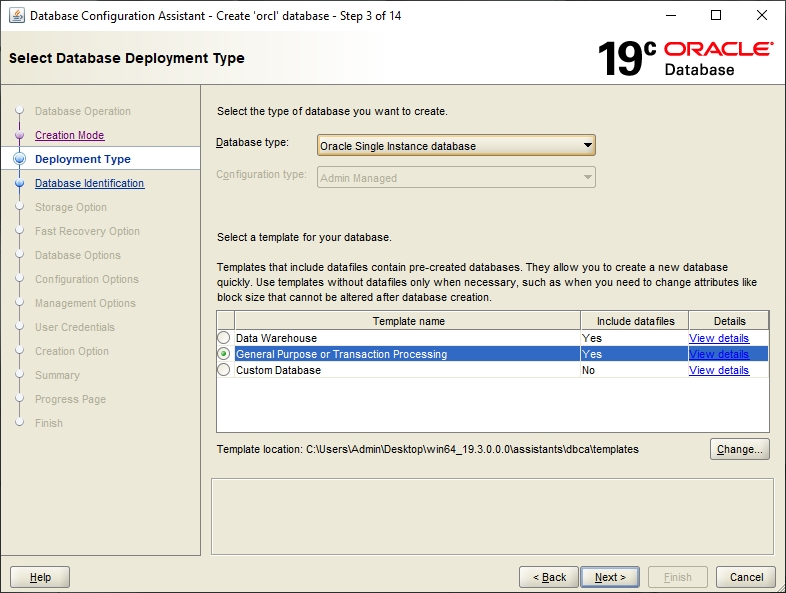
Step 4: Database identification
Define the database name here. The name must be unique, meaning that there should not be another database with this name on the network. The SID is the name of a database instance and can differ – if desired - from the global database name. In order to make an easy identification of the database possible, a descriptive name should be selected, for instance „migration“.
You can either create it as a Container DB with a Pluggable DB inside or not, depending on preference.

Step 5: Storage Options
For use with migration-center the “File System” option is sufficient. For more information on the “ASM” method, please refer to the Oracle documentation.
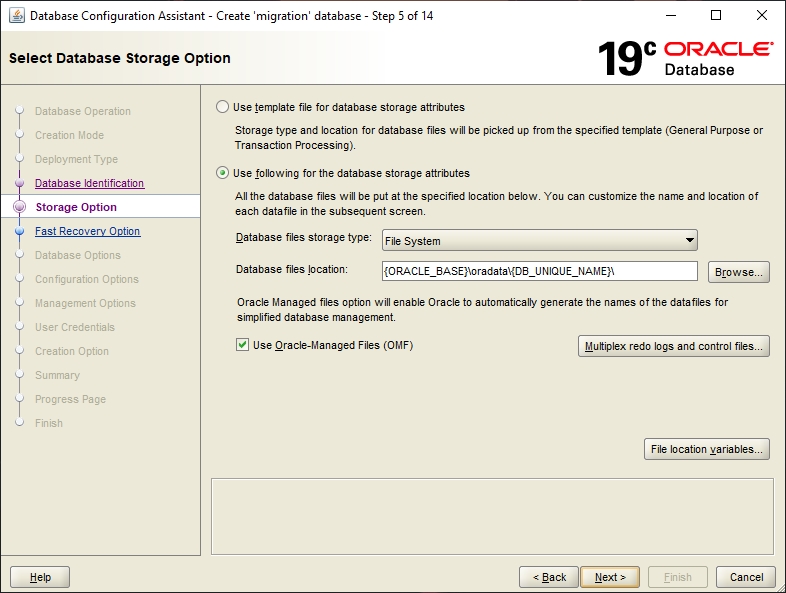
Step 6: Recovery Options
This step describes the database's archiving and recovery modes. The default settings are fine here.
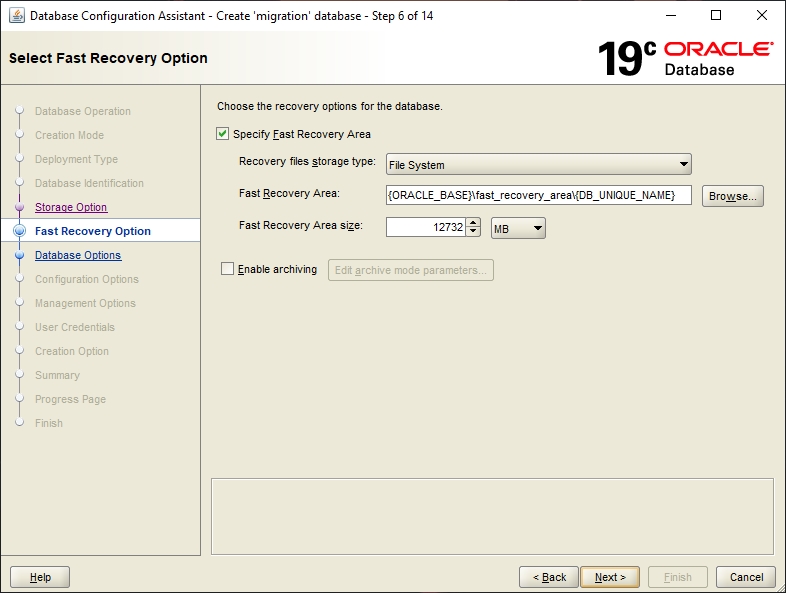
Step 7: Network Options
If a default listener is not already configured, you can select one here or choose to create a new one:
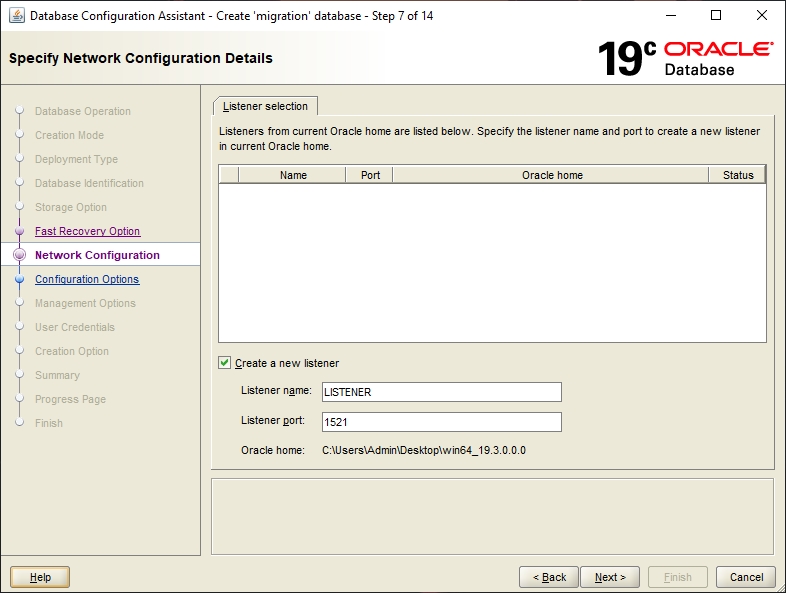
Step 8: Configuration Options
This step contains several tabs on which the configuration options for the new database must be specified.
Memory
The memory values of the database need to be specified here. For migration-center, user-defined settings are required. Please review the Database chapter the Sizing Guide for the recommended amount of memory allocated to the database instance.
For most projects Automatic Memory Management is a good option.
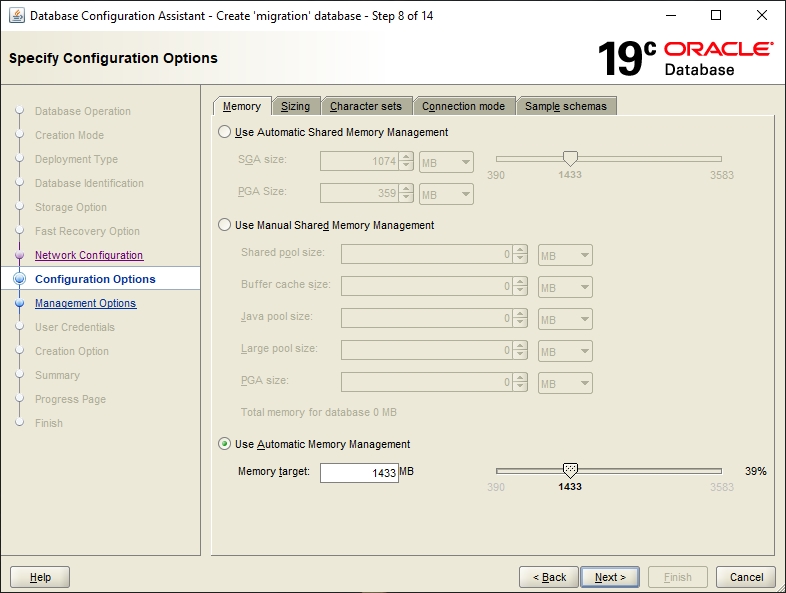
Sizing
At this point the block sizes and maximum number of user processes are defined. The default block size and maximum number of processes can be applied.
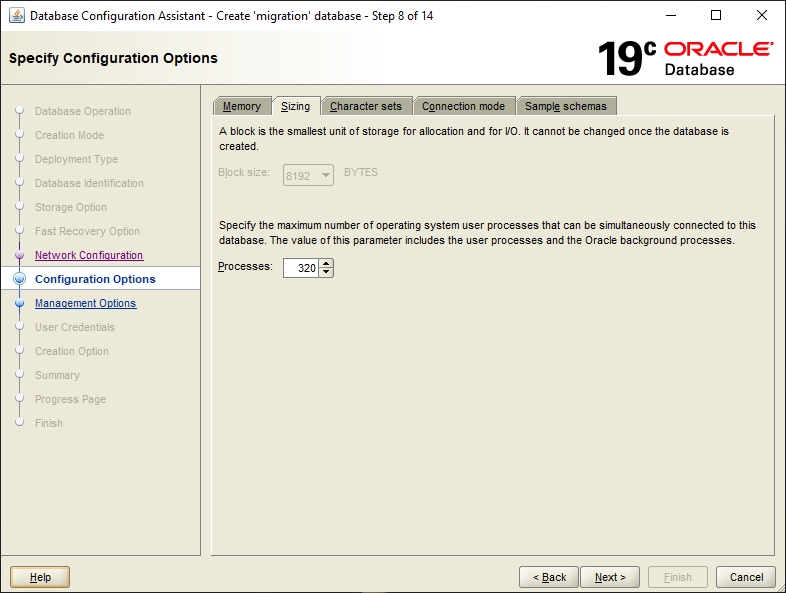
Character Sets
The Unicode character set AL32UTF8 must be selected here. This character set will ensure that all special characters of any language will be correctly saved in the database.
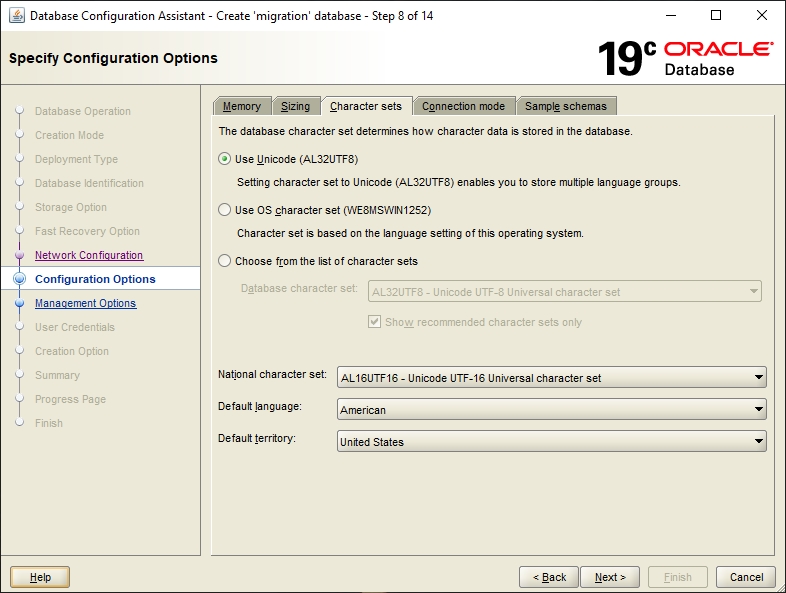
Connection Mode
The option Dedicated Server Mode connection type is appropriate for migration-center.
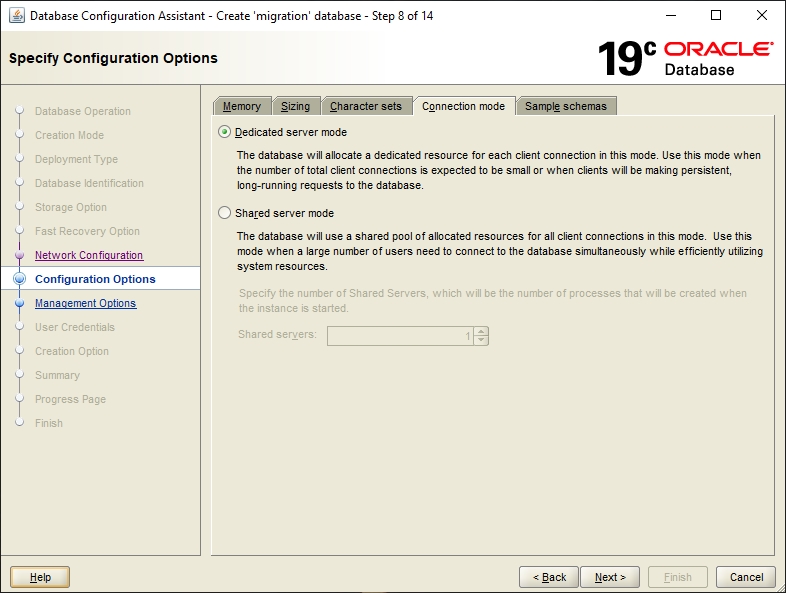
Sample Schemas
Sample Schemas are not needed so leave the option unchecked.
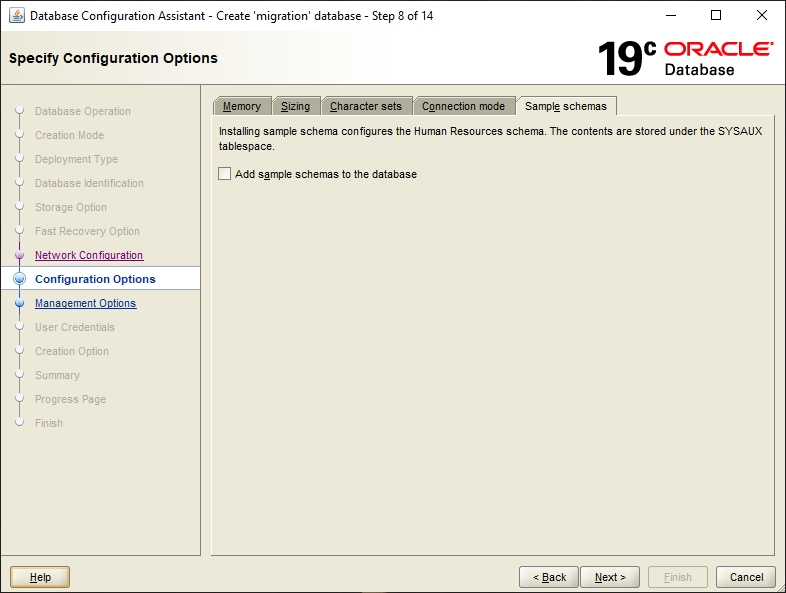
Step 9: Management options
To manage the database, Oracle Enterprise Manager is recommended. In Oracle 19c, databases can be managed centrally using the Grid Control or locally using the Database Control. Since the choice of database management has no influence on the operability of migration-center, this can be configured according to personal preferences or company policies. For the purposes of this guide the local Database Control will not be selected here. E-mail notification and backup can be configured separately at a later time, if necessary.
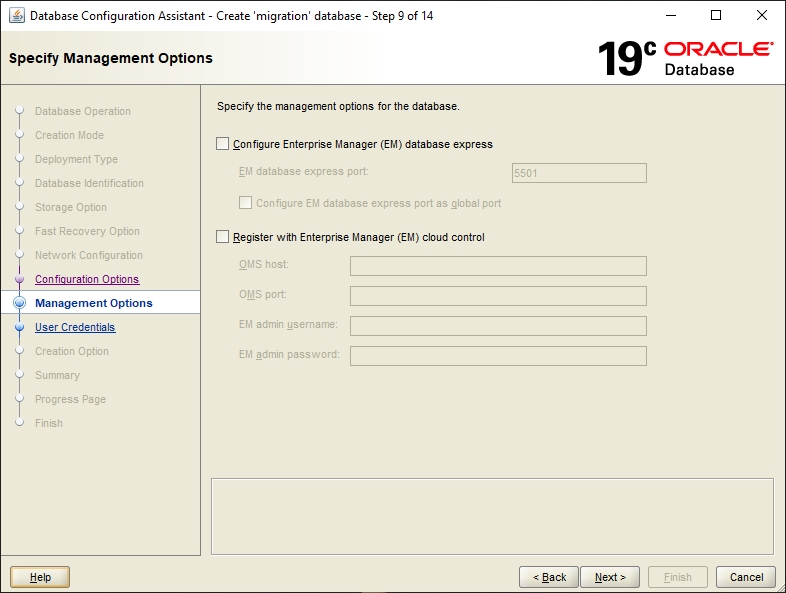
Step 10: User Credentials
Now the passwords for the Oracle system accounts SYS, SYSTEM and PDBADMIN must be entered and confirmed. These accounts with their passwords are needed for the installation of the migration-center database schema.
These accounts/passwords grant full rights for the new Oracle database and should therefore be chosen and safeguarded carefully. The allocation of different passwords is recommended.

Step 11: Creation Option
Optionally a script can be generated which contains all the settings for the creation of this database. With this script, the setup can be repeated later if necessary. Moreover this script can be used as documentation for the settings used.

Step 12: Summary
The assistant shows a summary of the previous settings. This summary can be stored for documentation purposes in an RSP file.
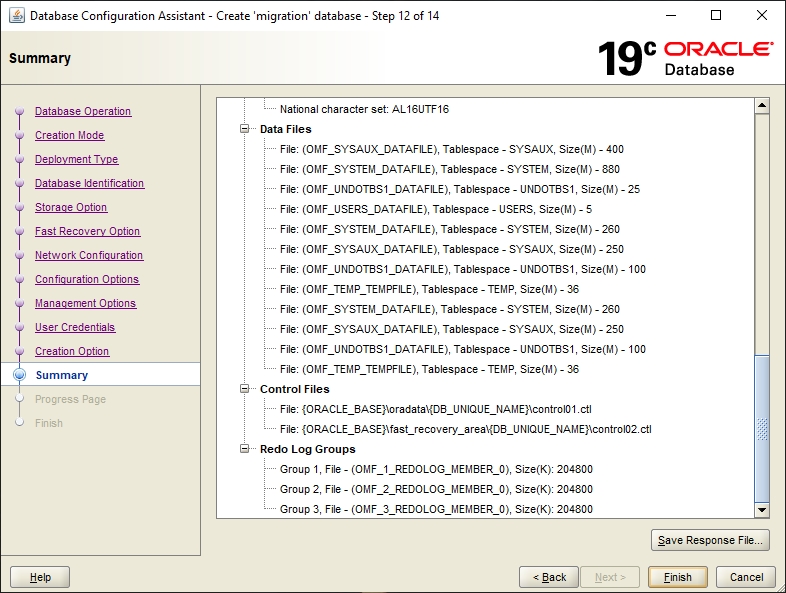
Clicking on Finish will start the database creation process. This process can take some time.
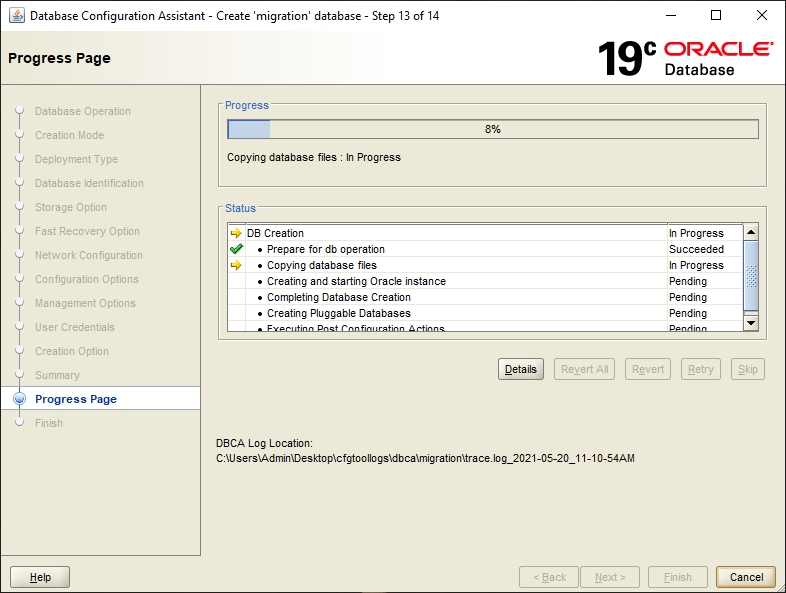
Additional Information
The Oracle database Configuration Assistant generates the following tablespaces (we assume that unused tablespace is marked to be deleted):
INDX
SYSTEM
TEMP
TOOLS
UNDOTBS
USERS
Summary of the most important Oracle 19c installation parameters
Oracle components:
Oracle Database
Oracle XML DB
Oracle Net Listener
Oracle Call Interface
General options:
Oracle JVM
Enterprise Manager Repository (optional)
Initialization parameters:
Dependent on server
Character sets:
Database character set (AL32UTF8)
Data files:
Use standard parameters
Control files:
Use standard parameters
Redo log groups:
Use standard parameters
Was this helpful?

